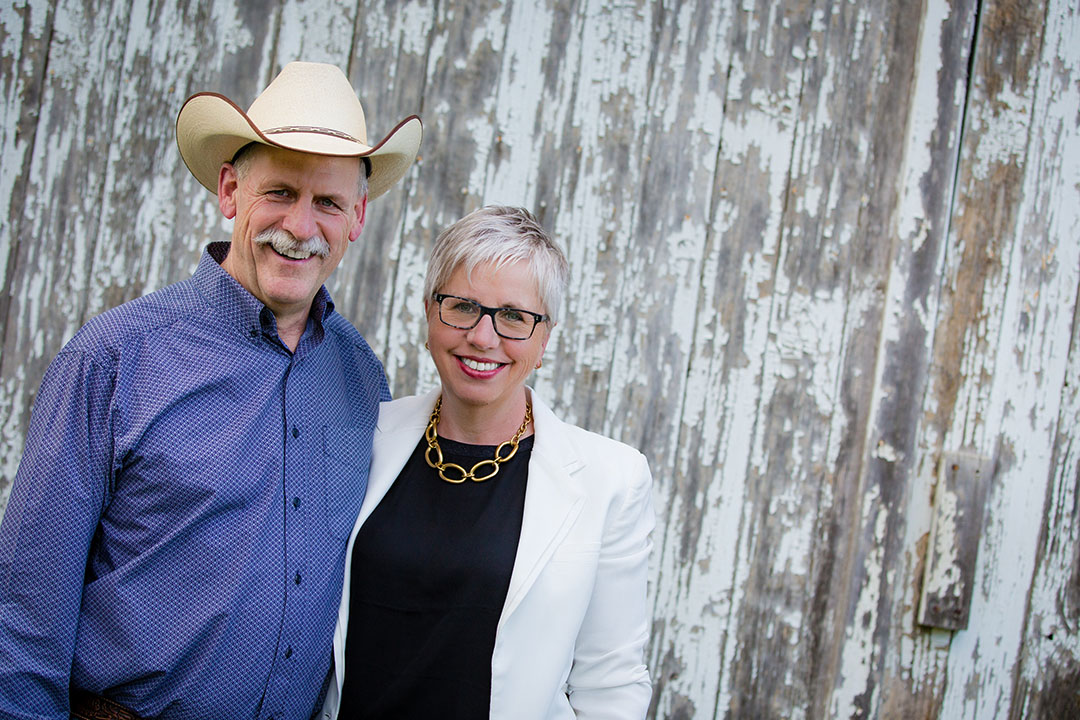
Big on beef, passionate for poultry
They are both passionate about animal welfare and about research advancements to improve the agriculture industry.
By James ShewagaSo, it should come as no surprise that being professors on campus and partners at home goes hand-in-hand for Karen Schwean-Lardner and Bart Lardner of the University of Saskatchewan.
“We both care about the welfare of the animals and birds and how important that is for producers,” said Karen Schwean-Lardner, an assistant professor in the College of Agriculture and Bioresources who specializes in poultry production. “In this country, we have codes of practice for beef, for dairy, and for poultry, that are defined by science-informed groups. And we have a system in which every commercial farm in Canada is audited based on their welfare standards and based on their food safety standards, which is wonderful.”
“Animal care and animal welfare is front and centre for producers, and as researchers it is important in everything we do,” added Bart Lardner, a professor in the Department of Animal and Poultry Science, whose specialty is the science of beef production. “If the animal is sick, then that animal is of no value to the producer. So, producers are extremely concerned about animal care and animal welfare and proper handling techniques and it’s in their best interest.”
Whether it is beef or poultry, both are big proponents of the power-packed protein provided by both products, delivering desirable nutrients to help feed an ever-growing population. For their work, both earned international awards this year, with Karen receiving the Poultry Science Association’s Early Achievement Award for Research on July 26 in San Antonio, Texas, while Bart was honoured with the American Society of Animal Science’s Western Section Extension Award on June 20 in Bend, Oregon.
For Karen, her poultry research is firmly focused on ethical and safe practices in egg production and raising chickens and turkeys for consumers.
“I am not an animal rights person, I am an animal welfare person, and those are two very different things,” she said. “We find out what the animal needs to meet their biological requirements and their welfare requirements and those become the minimum standards for production across the country. So, the work that I do is centred on managing healthy birds in a way that we can provide food for people, always with the welfare of the birds in mind.”
Her work has had worldwide impact, with her research into effective barn lighting for birds helping to establish international industry lighting standards, a project she began as a U of S PhD student.
“What we found is birds do need to sleep,” she said. “Traditionally, producers would raise birds on 23 or 24 hours of light, thinking that if they can see all the time, they can eat whenever they want to eat. But our research found that they do actually need down time and they need it dark to sleep.”
For his part, Bart has beefed up university research into everything from cattle nutrition to forage and pasture management. Like Karen, he also earned his bachelor’s, master’s and PhD at the U of S before becoming a faculty member, first as a leading researcher centred at the Western Beef Development Centre and now splitting his time between the U of S main campus and the new Livestock and Forage Centre of Excellence at Clavet.
“This kind of research centre is not found anywhere else in Canada, or any other country, for that matter,” he said. “We are bringing all these disciplines under one roof, from animal health to cow-calf and forage management, to feedlot and backgrounding management, as well as engineering and economics. So, I’m really looking forward to the future.”
For the past 20 years, he has strived to bring new developments to the field, bridging the gap between researchers and ranchers, linking the lab to the land.
“Since I became a researcher, I’ve always set out to do work that the producer can integrate into their operation, which we call applied research,” he said. “My other objective has been to disseminate the scientific findings down to the producer, and that is extension, or tech transfer. I have always felt that I am an intermediary between the research community and the stakeholders and producers. So, I am really passionate about the research that I do.”
Over the past 50 years, that transfer of technology and institute-industry partnership has provided a proven track record of success in the beef industry, combining better food safety and animal welfare practices with improved productivity and sustainability standards, making better use of the same amount of land.
“Our efficiencies in the beef industry have improved four-fold since the 1950s,” Lardner said. “And why? Because we have better technology, we have proper grazing management and we know that producers are good stewards of their resources—the soil, the crops, the land. In fact, the majority of producers that I interact with, their objective is to leave those resources in better condition for their children and for the next generation.”
And whether it’s beef or poultry, the agriculture industry needs to produce more to feed a growing world population that is projected to double from four billion in 1974 to eight billion by 2023.
“We have two choices: plant protein or meat protein. But we need more of both, end of story,” he said.
So, after 16 years of marriage, is it steak or chicken on the barbecue on a Saturday night?
“I have a standing joke that my wife is a poultry scientist and I’m a beef scientist, so we don’t talk meat groups at home,” Bart said with a chuckle. “But I still love a good barbecued steak.”
“Everyone asks us the same question,” Karen adds. “But I can serve chicken, or turkey or eggs and all he can do is bring a steak, so I have him beat, no problem!”

